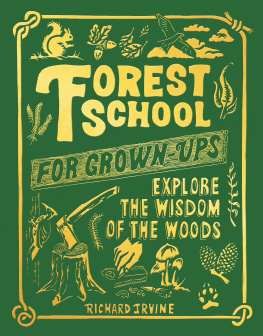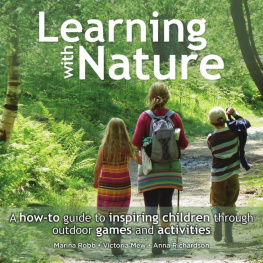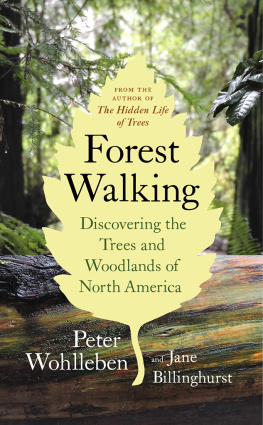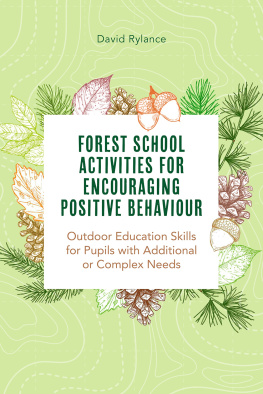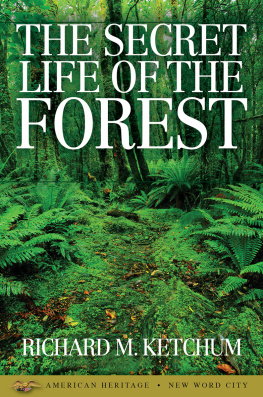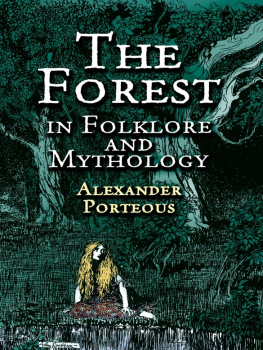FOREST
SCHOOL
FOR GROWN-UPS

FOREST
SCHOOL
FOR GROWN-UPS
EXPLORE THE
WISDOM OF THE WOODS

RICHARD IRVINE
ILLUSTRATED BY PAUL OAKLEY
www.headofzeus.com
First published in the UK in 2022 by Head of Zeus Ltd
An Apollo book
Copyright UniPress Books Ltd, 2022
The moral right of Richard Irvine to be identified as the author of this work has been asserted in accordance with the Copyright, Designs and Patents Act of 1988.
All rights reserved. No part of this publication may be reproduced, stored in a retrieval system, or transmitted in any form or by any means, electronic, mechanical, photocopying, recording, or otherwise, without the prior permission of both the copyright owner and the above publisher of this book.
Neither the publisher nor the author bear responsibility for the results of any project or activity described in this book or for the readers safety during participation. Caution and common sense are recommended at all times.
A catalogue record for this book is available from the British Library.
ISBN (HB): 9781801107310
ISBN (E): 9781801107327
Produced by UniPress Books Ltd
Project editor: John Andrews
Feature writer: Tracey Kelly
Indexer: Marie Lorimer
Head of Zeus Ltd
58 Hardwick Street
London EC1R 4RG
www.headofzeus.com
CONTENTS
What is forest school? It means different things to different people in different countries, but at its heart forest school is an educational philosophy that places a high value on play and nurtures creativity and curiosity, putting the needs of the participants before the demands of a school curriculum. It should revolve around frequent visits to forests, woodlands and other wild places to build familiarity, community and care for the planet. The ideas behind forest school emerged from the progressive, communitarian forest cultures of Scandinavia and northern Europe, and in the past twenty years those ideas have put down roots in the UK and right around the globe.
*
Forest school looks much further than a one-off trip to the forest. Its about getting to know an outdoors place well and having time there to settle in and learn from it. People sometimes talk about forest school activities, but the term is really a misnomer. Inspired by the natural world around them and other members of the community, participants might choose to learn about absolutely anything that catches their interest and this book aims to fill you with the same inspiration. There are no badges to collect or awards to win. You have permission to play, explore, improvise and experiment, and to make your own path through a forest of ideas and learning.
WHY FOREST SCHOOL FOR GROWN-UPS?
The forest school model started as a form of early years education outdoors but has adapted and evolved to be shared across a wide variety of ages and types of group. Often, adults accompanying young people to forest school ask if theres anything like this for grown-ups, and the answer is usually No. Nonetheless, grown-ups are still part of the forest school community, and they want to play, make and explore without necessarily being a responsible adult. If thats what you would like to do but arent sure where to start, then Forest School for Grown-ups is for you. If you love forests, coasts and wild places and want to spend more time in them, then theres plenty here to enrich your experience. If you need a bit of space with just the trees for company, then this book will also help you to make the most of the peace and renewal that time in the woods can offer.
You dont need to become a wilderness guide or expert bushcraft instructor to feel at home in the forest in all seasons. The information and ideas on these pages will help you to become more comfortable outdoors and better able to improvise, using what you know and what you can find in nature. This book was written not as a manual for forest school practitioners working with groups of adults but rather to provide inspiration for everyone who enjoys time in the woods including outdoor educators.

NEW ADVENTURES
For all those who love being among the trees, Forest School for Grown-ups offers a broad range of topics that aim to fascinate and inspire, from natural history, animal behaviour and ancient crafts to outdoor living skills, creative projects and forest fun and games. Its not an exhaustive or comprehensive guide to living wild; whole tomes have been written about the smallest of details on some of these pages. But wherever your initial interest lies, this book will ignite that spark and help to kindle a passion before you head off to find your own path, armed with new skills, local knowledge and boundless curiosity. The forest school ethos values intrinsic motivation to learn about what intrigues you, leading you to seek answers to your own questions rather than accumulate knowledge for its own sake. Youll be much more likely to persist and learn when its something you really want to do, and you can see how new experiences will lead to new possibilities.
Any one of the following pages could be a jumping-off point for a world of discovery, an absorbing new hobby or a journey towards unexpected expertise. All learning involves uncertainty, and forest school embraces taking appropriate risks, whether they are physical, social or psychological. Its easy to stay in our comfort zones and become slowly risk-averse, but a life well lived needs adventure, surprise, unpredictability and spontaneity so stray off the path, go out in the rain, climb a tree, but most of all, risk trying something new.
I wish you great adventures, new discoveries and much learning about the forest and yourself. As the great American writer and defender of the wilderness Edward Abbey (192789) said:
May your trails be crooked, winding, lonesome, dangerous, leading to the most amazing view. May your mountains rise into and above the clouds. May your rivers flow without end, meandering through pastoral valleys tinkling with bells, past temples and castles and poets towers into a dark primeval forest where something strange and more beautiful and more full of wonder than your deepest dreams waits for you.


From spring through to winter, things can change dramatically in the forest for plants, trees and animals. How we define the seasons, however, is not a clear-cut matter. Some prefer to use the neat packages of the meteorological calendar with four three-month seasons, where spring runs from March to May, summer June to August, autumn September to November and winter December to February. When it comes to the changing patterns of the forest, though, the astronomical calendar makes more sense, with each season bookended by a milestone in Earths orbit around the sun. The equinoxes the dates when day and night are equal and the solstices, which mark the longest and shortest days, relate directly to the amount of solar energy hitting the hemisphere and so define annual rhythms of plant growth and animal behaviour.

